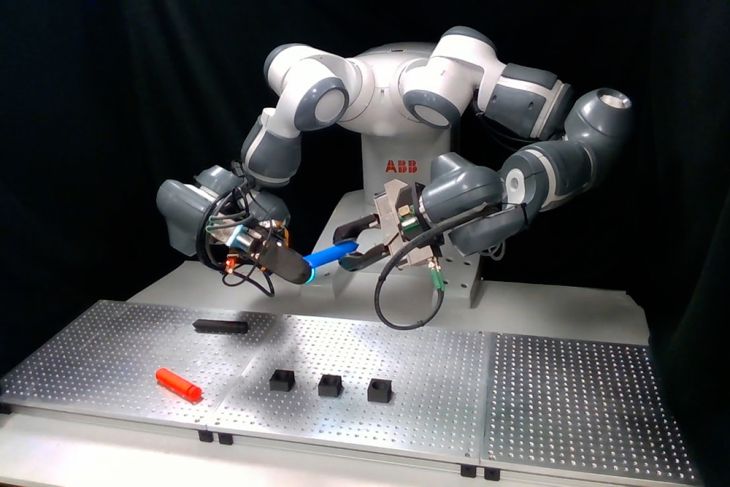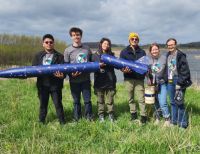Pick-and-place machines are a type of automated equipment used to place objects into structured, organized locations. These machines are used for a variety of applications — from electronics assembly to packaging, bin picking, and even inspection — but many current pick-and-place solutions are limited. Current solutions lack “precise generalization,” or the ability to solve many tasks without compromising on accuracy.
“In industry, you often see that [manufacturers] end up with very tailored solutions to the particular problem that they have, so a lot of engineering and not so much flexibility in terms of the solution,” Maria Bauza Villalonga PhD ’22, a senior research scientist at Google DeepMind where she works on robotics and robotic manipulation. “SimPLE solves this problem and provides a solution to pick-and-place that is flexible and still provides the needed precision.”
A new paper by MechE researchers published in the journal Science Robotics explores pick-and-place solutions with more precision. In precise pick-and-place, also known as kitting, the robot transforms an unstructured arrangement of objects into an organized arrangement. The approach, dubbed SimPLE (Simulation to Pick Localize and placE), learns to pick, regrasp and place objects using the object’s computer-aided design (CAD) model, and all without any prior experience or encounters with the specific objects.
“The promise of SimPLE is that we can solve many different tasks with the same hardware and software using simulation to learn models that adapt to each specific task,” says Alberto Rodriguez, an MIT visiting scientist who is a former member of the MechE faculty and now associate director of manipulation research for Boston Dynamics. SimPLE was developed by members of the Manipulation and Mechanisms Lab at MIT (MCube) under Rodriguez’ direction.
“In this work we show that it is possible to achieve the levels of positional accuracy that are required for many industrial pick and place tasks without any other specialization,” Rodriguez says.















